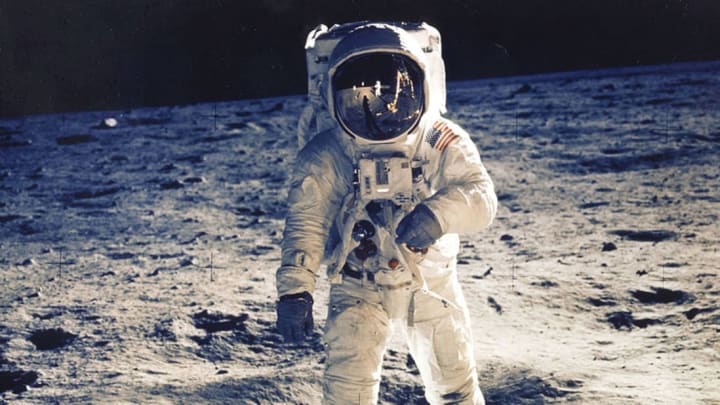
How could spacemen walk on the moon when it is constantly being bombarded with micrometeoroids at speeds of 22,500 mph?
The Moon is big. Micrometeoroids are small.
The Moon gets hit by about 2800 kg of meteor material per day. I answered a similar question where musket balls were used as the example. We will copy that so that I don't have to do math while walking.
If we imagine a typical large musket ball with a mass of 28 g, we could imagine 100,000 of them rain down on the Moon each day. That sounds like a lot, but it is a big Moon.
The surface area of the Moon is about 37.9 million square kilometers. If we distribute our 100,000 musket ball meteorites over that area, we get one musket ball for ever 379 square kilometers. That's an area a little larger than Canton, Ohio or Glasgow, Scotland. If you lived in either of those cities and every day one musket ball fell from the skies, would you be significantly worried?
The Apollo 11 crew wandered around the Moon in an area of about 752 square meters. If we divide 379 square km by 752 square meters we get 503,718.14.
That means that if the Apollo 11 crew had stayed on the Moon 503,718 days (1,380 years), odds are that one, yes one, musket ball would come down somewhere in the area they were hanging out.
This post originally appeared on Quora. Click here to view.
